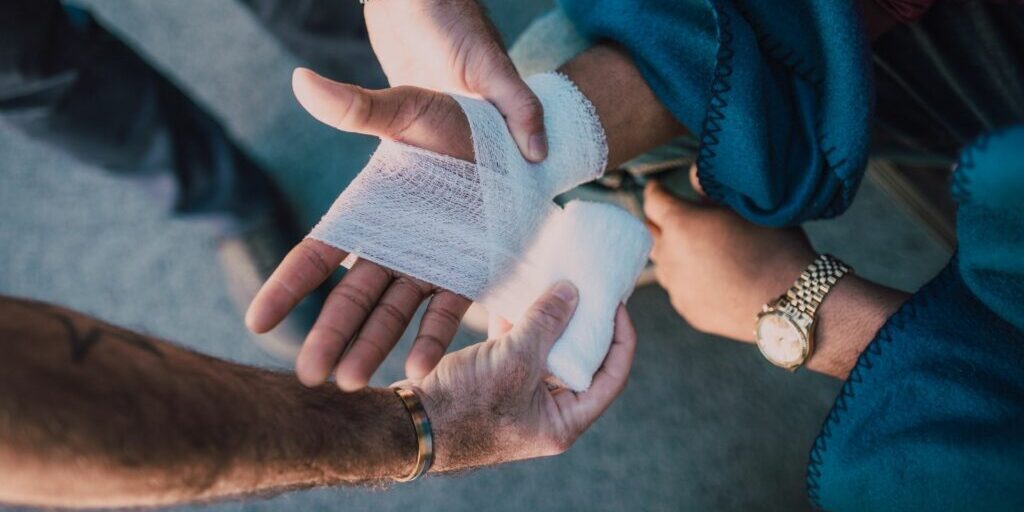When do I need to notify WorkSafe of an incident in the workplace?

Over the past weeks, news has tragically emerged of two delivery riders who were fatally struck by vehicles days apart in Sydney. The incidents have sparked renewed calls for more consistent WHS reporting obligations across Australia.
When a serious safety incident occurs in the workplace, you may be required to notify the relevant regulator in your state of territory. This not only extends to employees, but also contractors and subcontractors, outworkers, work experience students, and volunteers.
Except in Western Australia, if notification is required you must also preserve the site until an inspector arrives or you are directed otherwise.
This means that the hazard that caused the incident should be isolated, but not otherwise removed unless it is essential to make the site safe or minimise risk of a further notifiable incident. This may include restricting access to a certain area, or disabling any machinery operating in the area. However, you are still able to render assistance to the injured person.
Always call 000 if there is an immediate risk to life.
What types of incidents are required to be notified?
There is some variance between the types of incidents that are required to be notified depending on your state or territory. In general, you must notify the regulator where the incident results in:
- the death of a person;
- a serious injury or illness; or
- exposure to a dangerous incident (even if no one is injured).
The model WHS law, which functions similar to a uniform (or ‘harmonised’) set of laws, has been adopted by every state and territory except Victoria and Western Australia. The model law defines “serious injury or illness” as meaning an injury or illness that requires the person to have immediate treatment either as an in-patient in a hospital, or where immediate treatment is required for any of the following:
- amputation;
- series head or eye injuries;
- serious burns;
- the separation of skin from an underlying tissue (e.g. degloving);
- spinal injuries;
- the loss of a bodily function;
- serious lacerations; or
- within 48 hours of exposure to a substance.
In Victoria, the Occupational Health and Safety Act 2004 (Vic) contains all of the same requirements, however also includes incidents where the person requires immediate medical treatment for electric shock.
Western Australia on the other hand has its own list of prescribed conditions under the Occupational Safety and Health Regulations 1996 (WA), and includes:
- fractures of the skull, spine or pelvis;
- fractures of any bone in the arm, other than in the wrists or hand;
- fractures of any bone in the leg, other than in the ankle or foot;
- amputation of an arm, a hand, finger, finger joint, leg, foot, toe or toe joint;
- the loss of sight of an eye; or
- any other injury which, in the opinion of a medical practitioner, is likely to prevent the employee from being able to work within 10 days of the day on which the injury occurred.
Western Australia also requires certain diseases to be notified, which is discussed in further detail below.
Is notification required where no one has been injured?
In some cases, dangerous incidents or ‘near misses’ are also required to be notified even if no one is actually injured.
Under the model WHS law, excluding Victoria and Western Australia, the following types of incidents are required to be notified if they expose a worker to a serious risk to health or safety as a result of:
- an uncontrolled escape, spillage or leakage of a substance;
- an uncontrolled implosion, explosion or fire;
- an uncontrolled escape of gas or steam;
- an uncontrolled escape of a pressurised substance;
- electric shock;
- the fall or release from a height of any plant, substance or thing;
- the collapse, overturning, failure or malfunction of, or damage to, any plant that is required to be registered (for example, tower cranes, lifts and escalators, or stock pickers exceeding 2.4 metres);
- the collapse or partial collapse of a structure;
- the collapse or failure of an excavation or of any shoring supporting an excavation;
- the inrush of water, mud or gas in workings, in an underground excavation or tunnel; or
- the interruption of the main system of ventilation in an underground excavation or tunnel.
Victoria once again has similar requirements, though only requires incidents such as the inrush of water, mud or gas to be reported where it occurs in connection with a mine.
However, there are no obligations in Western Australia to report ‘near misses’ unless operating in the mining or petroleum and geothermal energy industries, or involves dangerous goods such as explosives.
What about diseases?
The model WHS law requires that where a worker suffers a serious illness (including a disease) in connection with the workplace and requires treatment as an in-patient in a hospital, this may need to be reported. The model law also defines “serious illness” as including “any infection to which the carrying out of work is a significant contributing factor.” For this reason, confirmed cases of COVID-19 in the workplace may also need reported in the states and territories that have adopted the model WHS law.
Victoria recently introduced the Occupational Health and Safety (COVID-19 Incident Notification) Regulations 2020 (Vic) which requires the regulator to be notified if a worker has been diagnosed with COVID-19, and has attended work within 14 days of receiving the diagnosis.
In Western Australia, the following diseases are required to be reported where they have been contracted during work involving exposure to human blood products, body secretions, excretions or other material which may be a source of infection:
- tuberculosis;
- viral hepatitis;
- Legionnaires’ disease; and
To date, the regulations in Western Australia have not been amended to include COVID-19.
Lastly, in all states and territories except Victoria certain occupational zoonoses (that is, diseases of animals) are required to be reported where they are contracted in the course of work involving the handling or contact with animals or animal products, including:
- Q fever;
- Anthrax;
- Leptospirosis;
- Brucellosis;
- Hendra virus (excluding WA);
- Avian influenza (excluding WA); or
- Psittacosis (excluding WA).
How long do you have to report a notifiable incident?
Regardless of state or territory, notification of any of the incidents outlined above is required to occur immediately.
Each state and territory has a different reporting mechanism, and as such it is important to be aware of which regulator is required to be notified.
SafeWork Australia provides up-to-date information on how to contact the regulator in your state or territory.
If you require assistance with determining whether you are required to notify a regulator following a serious safety incident, contact NRA Legal immediately on 1800 572 679.
Contact our team today






